The name itself conjures images of huge chasms dropping away to blue-black nothingness. Many cave divers would have seen the cross-section portraying this area on Eric Hutchinson’s iconic map of the classic Nohoch Nah Chich cave system or seen photos of it on social media or in print. Picture yourself entering the cave at Cenote Nohoch, gearing up in daylight, dropping down, and moving to the cave entrance, sun rays beaming down. You cross into the cavern; light recedes as you connect your reel to the cave line, the beams of the primary lights reflecting off the gas pockets in the ceiling. You then have a three-kilometer (ten-thousand-feet) section of the cave to travel through. Copious amounts of stalactites and stalagmites are everywhere you look, huge masses of tree roots push down through the rock ceiling into the aquifer in their search for water, and white dunes of calcite alternate with flat sections of floor marked with flow ripples from thousands of years of flowing water. You continue through sections of the cave where the tunnel becomes more of a canyon, the ceiling stretching up as the walls close in, while in other sections your lights barely reach the walls as the tunnel widens. Once you arrive, the cave gradually becomes shallower, from ten meters to six meters, and then the floor just drops away, and you gaze into the Blue Abyss. Your lights penetrate the water, the most powerful primary lights barely reaching the bottom where boulders and rocks choke off the sloping pit. Should you drop down to thirty-five meters, there is a convenient boulder to use as a reference, and the line continues before disappearing amongst the boulders.
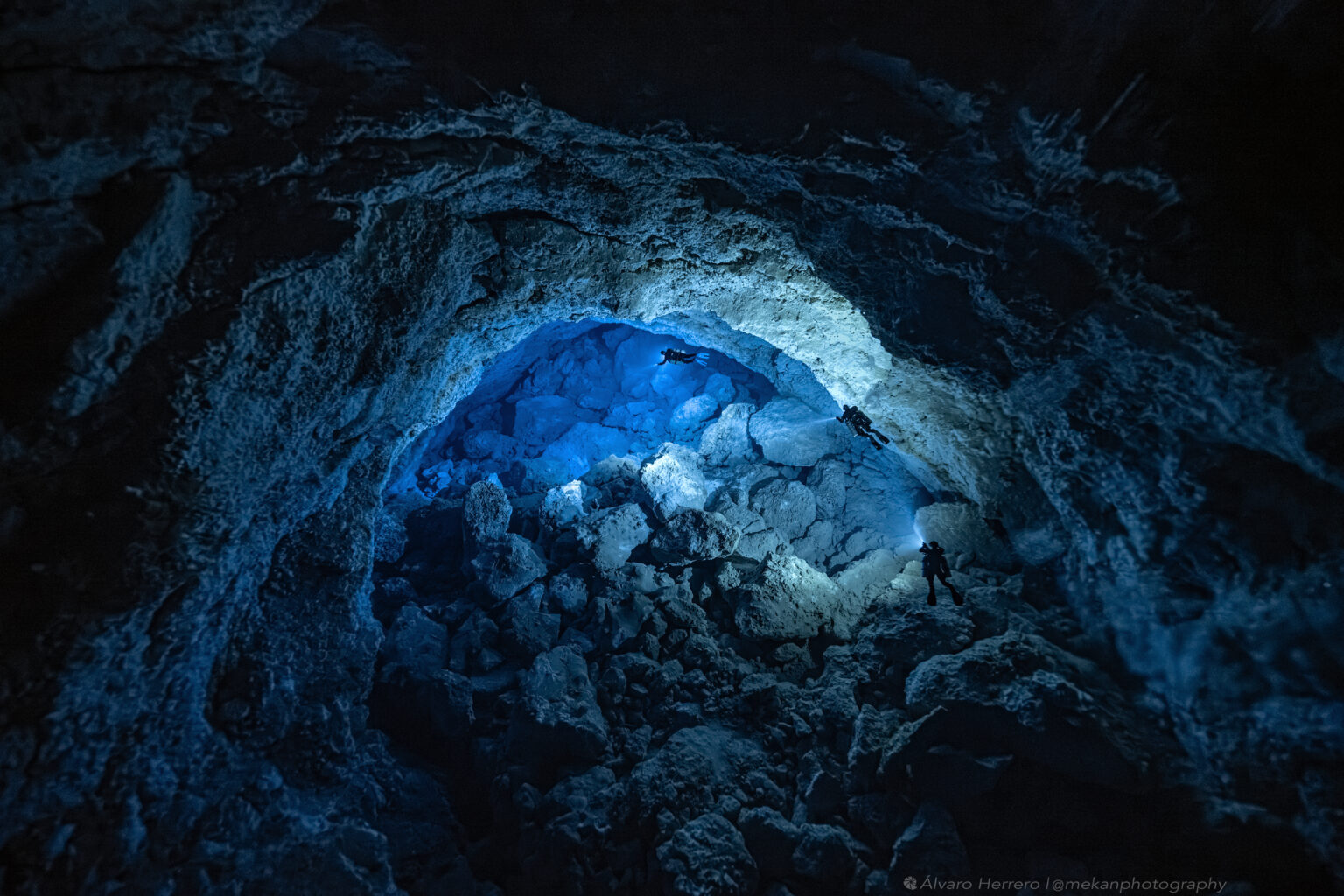
The Blue Abyss was first discovered and dived during the original Nohoch Nah Chich explorations in the 1990s. Mike Madden and Bill Main did the initial exploration of the main pit (backmount 104’s, on air). Due to the distances from the cenote entrances, the depths involved, and the nature of the area, there was no more significant exploration done in those depths until 2010/11. Over a series of dives, Krzysztof Starnawski pushed through the TKM restriction at the bottom of the pit, squeezing between boulders to continue into the deeper section. As he went, he discovered and named the Eques passage and Noble Room and pushed the depth from seventy to one hundred meters. We are truly standing on the shoulders of giants whose exploration has made our diving so much easier!
The Blue Abyss is also accessible from Cenote Pet Cemetery, a closer entrance and a shorter swim. However, the size of the cave is smaller taking this route with either the King Pong or the ‘tank off, tank on’ restrictions to navigate. For transporting additional tanks with deeper gas mixes and decompression gas, it means it is less ideal. We chose the longer route, by distance, for easier transportation of the gas. The bottom of the main pit is a mess of boulders that fills up the entrance to the deeper section and makes access difficult requiring Sidemount and removing tanks to pass. Already the logistics become difficult requiring DPVs, travel gas to get to the Abyss, multiple gases for depth and deco, and Sidemount configuration.
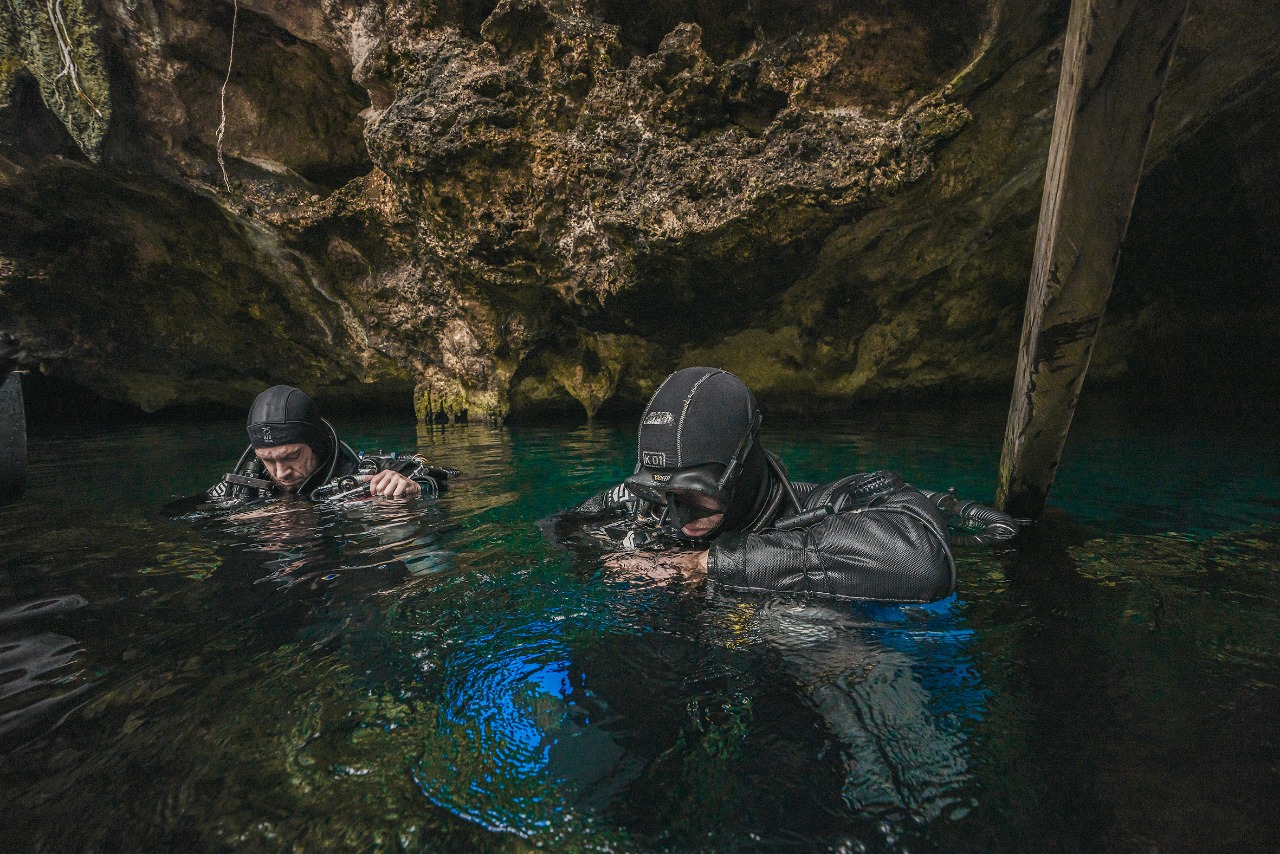
Once the team at ProTec started diving the KISS Sidewinder rebreather, we became interested in a deep diving project. Patrick was curious about what was beyond the TKM restriction and his previous CCR, the Megaladon, was not suitable for this cave exploration being a big backmount CCR unit. In 2020 we started to do the initial reconnaissance and survey work to undertake this exploration. Kim Davidsson, Jake Bulman, Patrick Widmann and myself, did the cave survey from Cenote Nohoch main entrance down to the TKM restriction and onwards during the first dive. First Patrick, and then Jake, both passed the TKM restriction, requiring they remove both sidemount tanks at seventy meters depth, and surveyed a good amount of the existing lines down there.
Fast-forward two years to 2022! Since the 2020 dives, I had become a hypoxic rebreather diver and had built up some deep diving experience in projects like La Bendicion and Cenote Yaakun. Throughout 2021 Jake and I had talked about, planned and wanted to revisit the Blue Abyss. Schedule conflicts, a lack of decompression entertainment and at one point lack of DPVs meant that the project could not be realized. Finally, in June 2022 everything came together for a week of CCR deep diving and exploration !
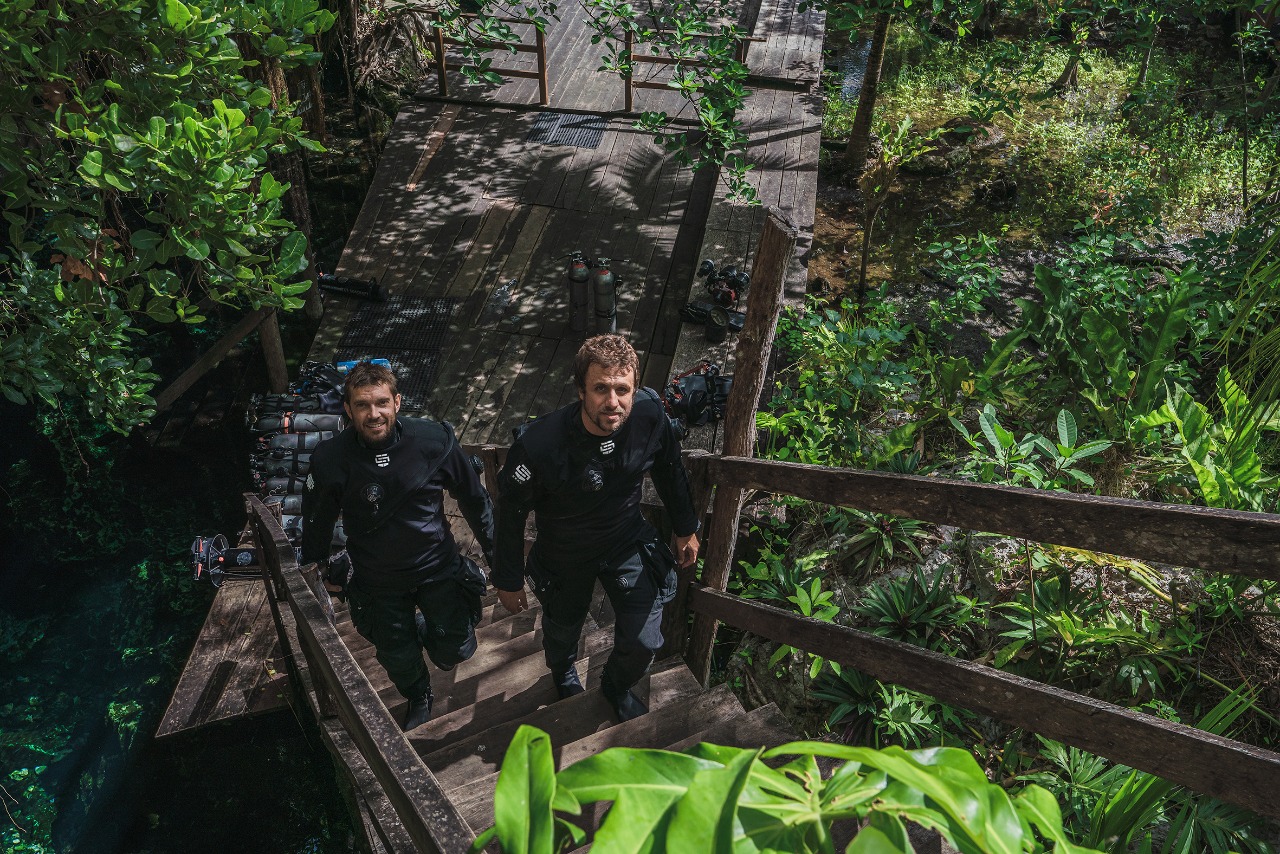
We had recently received our new Seal Drysuits so exposure protection on our long decompression stops wouldn’t be a problem. In 2021, during the initial exploration of Cenote Yaakun in Playa del Carmen, we realized that leaky drysuits and being cold during decompression was thoroughly miserable, not to mention potentially dangerous. Having four to five hours of decompression stops, with little opportunity to swim around to warm up definitely takes its toll on the body’s temperature, even more so with leaking suits. In the 2020 Blue Abyss and Cenote Yaakun (previously known as Godzilla Void project) dives we had used Patrick’s iPhone in a housing to watch movies. Now Jake had his own phone housing, so we were set up with entertainment for our long decompressions. Both Jake and I had a week open in the calendar, and the Seacraft DPVs were available so it was time to make it happen!
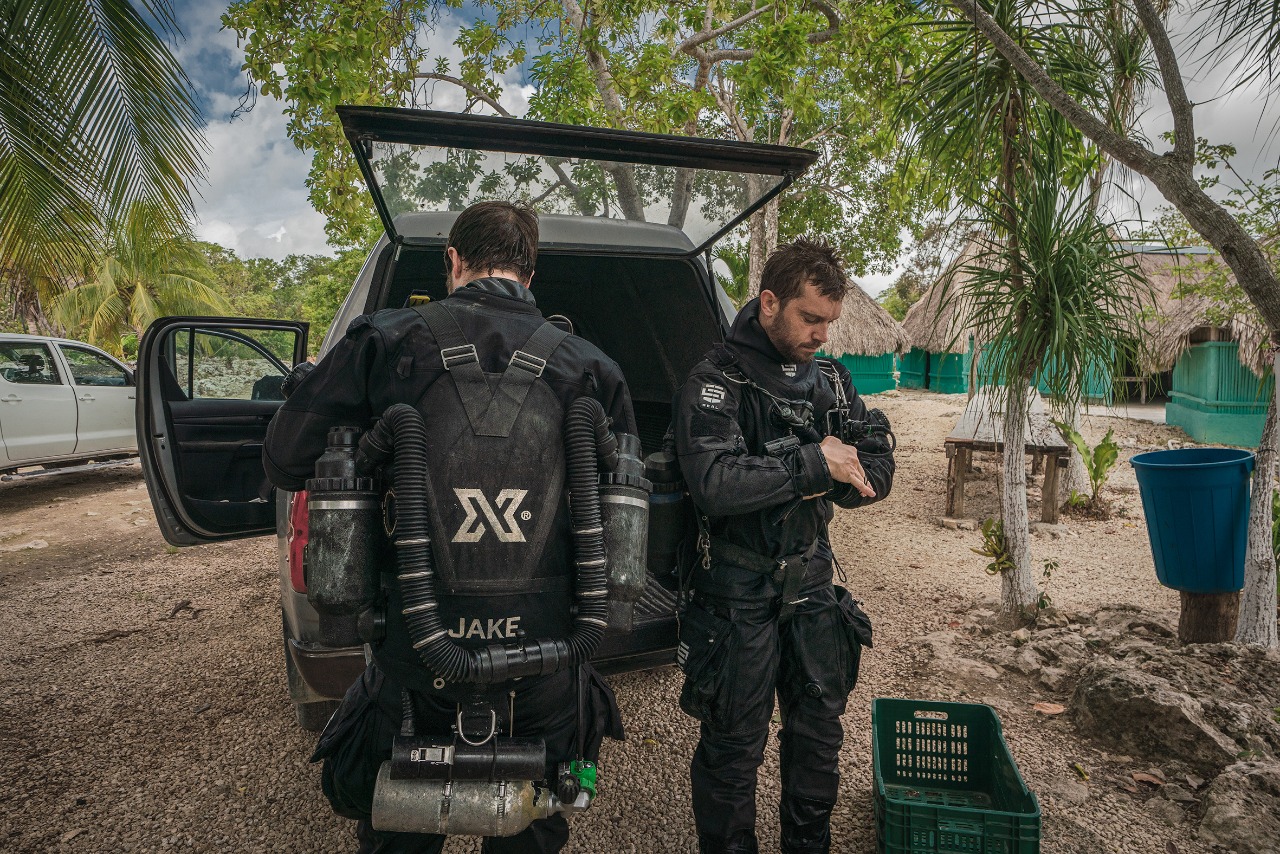
Our first dive of the project was a set-up dive. The main goals were to drop off our open circuit bailout and decompression gases (in case of rebreather failure), for me to pass through the TKM restriction, and finish any survey that was needed. We scootered in from Cenote Nohoch, installing the jumps and marking the T intersection on the way. Arriving at the Blue Abyss, we dropped our oxygen and began our descent into the Abyss. As we descended, we dropped off our tank of fifty per cent oxygen and our trimix bailouts and deco gasses. Arriving at the bottom, the line had been rerouted, the TKM restriction was now a jump, and the line continued through a deeper restriction. We passed the restriction, reorganized ourselves on the other side, and continued down through the Eques passage, marking T intersections as we passed them. Arriving at the final T intersection, we were both feeling good, and had time to spare so decided to continue the resurvey of Starnawski’s line. From this T intersection, the line dropped from eighty meters down to one hundred meters! After surveying seven stations, we decided to turn the dive having far surpassed our goals! The return through the restriction was uneventful, as was our ascent back up to our decompression station at six meters. On the way up, decompression entertainment was the Avengers Infinity War!
After our first dive, we realized that we would need to plan for deeper and longer dives, and decided to add an additional bailout / decompression tank. Given that the one hundred meter cave tunnel continued, and looked pretty big, it was decided that one of our Seacraft DPVs would be brought down through the restriction and used to scout the tunnel. As our dive the previous day had finished with the line going, our goal was to continue and hopefully complete the cave survey. So our second dive proceeded without a hitch, we scootered in, dropped our additional tank on the way down, and decided to connect the line to the TKM restriction and pass there. We shuffled tanks and the DPV through the TKM restriction and made our way down the breakdown of boulders before dropping down to the deep cave tunnel. It was Jake’s turn to survey, I scootered ahead, verifying the tie-offs were solid and the line was routed straight. What an impressive cave! White cave walls and ceiling, with light brown silt covering the bottom, it runs north in one line. As we continued in the tunnel sloped slightly lower, before once again dropping down this time to one hundred and ten meters! Here we decided to turn the dive, make our way out, and up for our longer decompression.
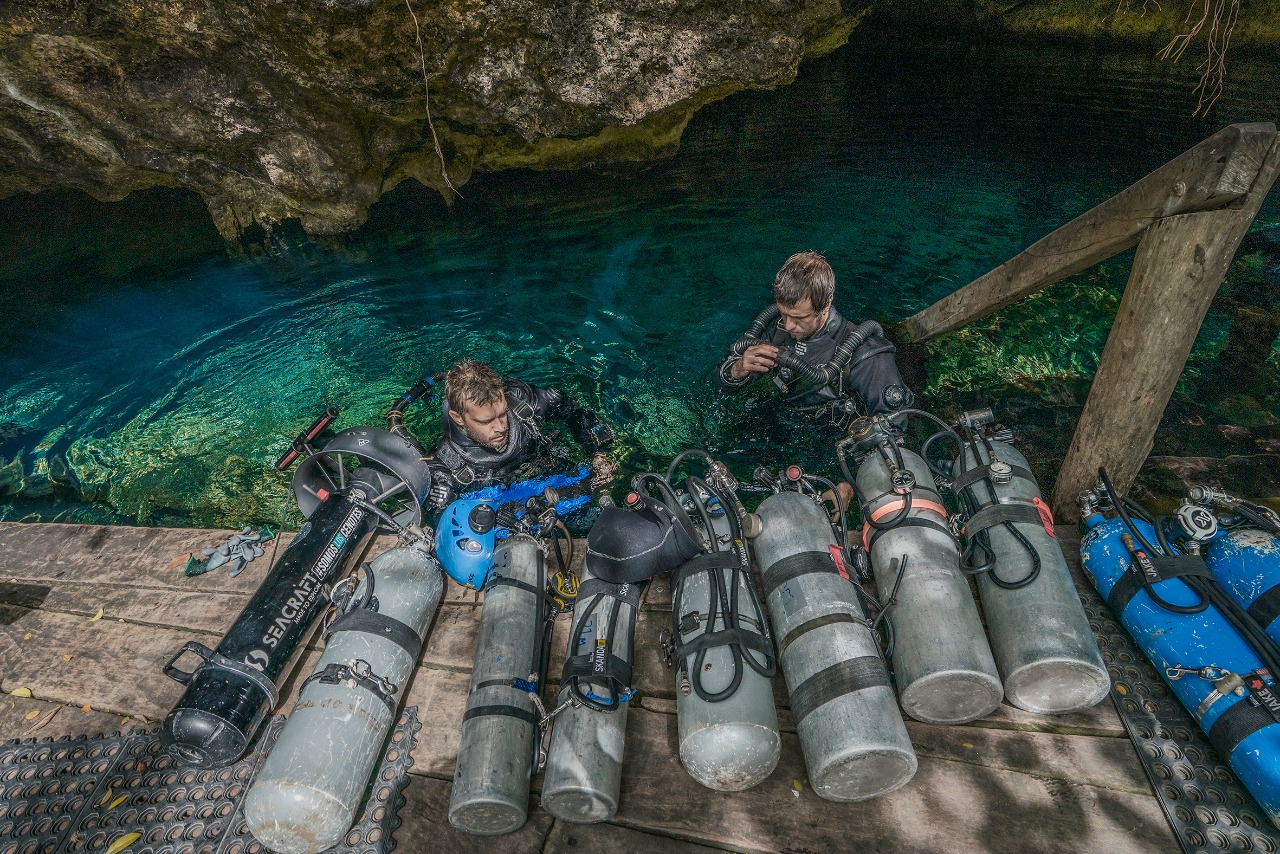
Day three began with an early start, meeting at ProTec Tulum at 7am to load tanks, Kiss Sidewinder rebreathers, and DPVs before heading to Cenote Nohoch. This time we were joined by the media team Mekan (Alvaro Herero) and Alfred Minnaar who were coming along to get some photos to document the project. They were kind enough to carry all our tanks and DPVs down to the water while we got dressed! After some photos in the open water, we headed off. For our third day, we wanted to take a second DPV through to the deep section, to more efficiently reach what we hoped was the last stretch of line to resurvey. By now the dive to the Blue Abyss and passing the TKM restriction was feeling pretty routine. We made our way down in good time, then took off on the DPVs towards our final survey station. I was surveying with the Mnemo, and luckily we had brought two because the first one had an error and was unusable. Very quickly we reached the end of the line! While it was satisfying to reach Starnawski’s end of line, it was a bit of a disappointment because the tunnel completely shut down, and there was no way on. We turned the dive and on the way back looked for any potential leads where we could continue exploration efforts. We each identified a lead, and then made our way up and out into the Blue Abyss for our decompression.
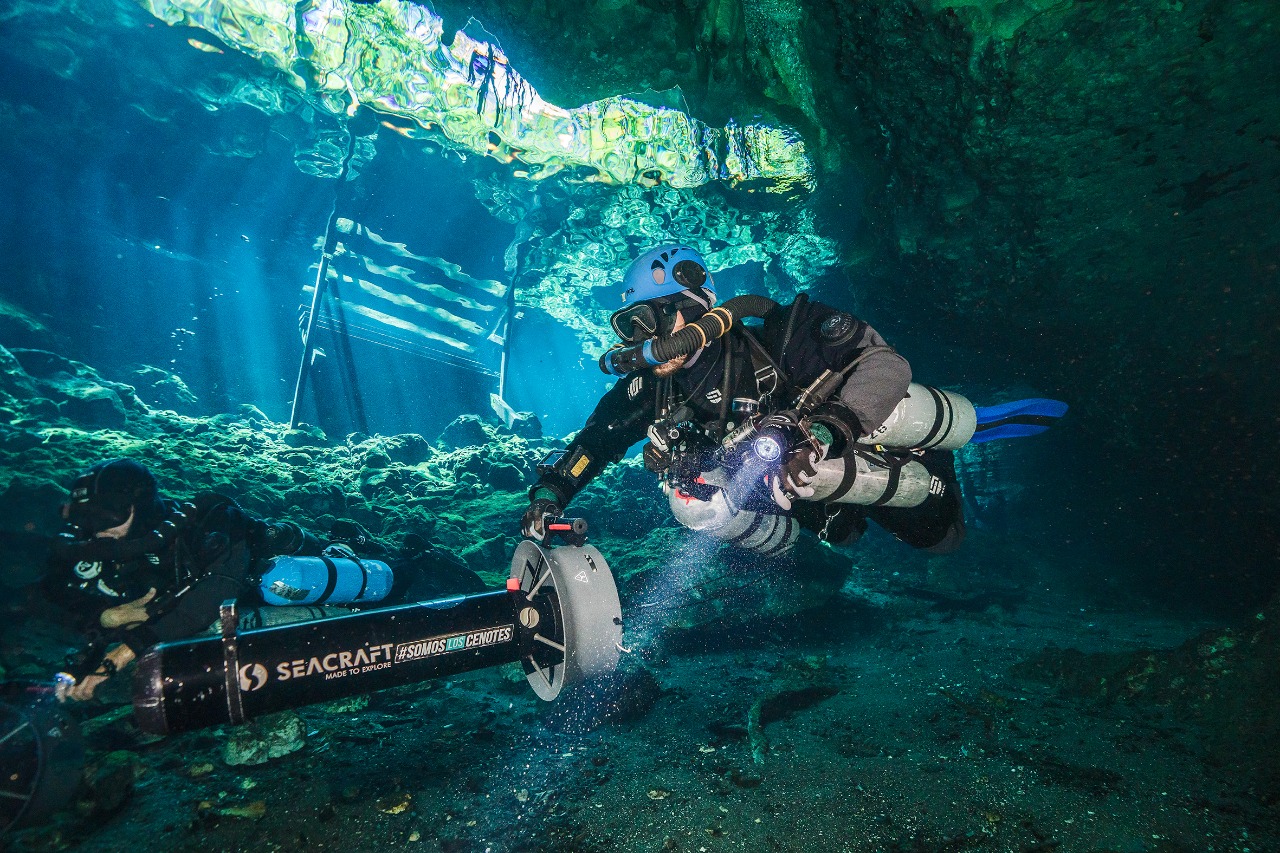
After a rest day, we were back at Cenote Nohoch, finally managing to get there before 8am!! It was an uneventful ride and descent into the Abyss, so soon enough we were ready to start checking our leads from the previous dive. I was first up; he tied the reel into the tie-off at one hundred meters and laid a line down into a silty room which very quickly opened up into a nice-sized tunnel. Cries of triumph very quickly became disappointment when after three shots the tunnel ended. As I was laying the line, Jake surveyed along behind. Once the tunnel ended and the line was cut, we turned and continued to Jake’s lead. Unfortunately, this one did not continue either, which wasn’t totally disappointing as it silted out almost immediately and the soft rock broke while making tie-offs. At this point our bottom time had been less than we had planned for, so we shallowed up and decided to resurvey some of the other ‘shallow’ lines at seventy meters. On the way up through our decompression stops we had to also bring up our additional tanks and DPVs. Our decompression went well, with us enjoying our standard ‘meal’ of Powerade and baby food while kicking back and watching one of the recent Transformers films. And then the ride out was annoying but smooth – we each had five tanks!
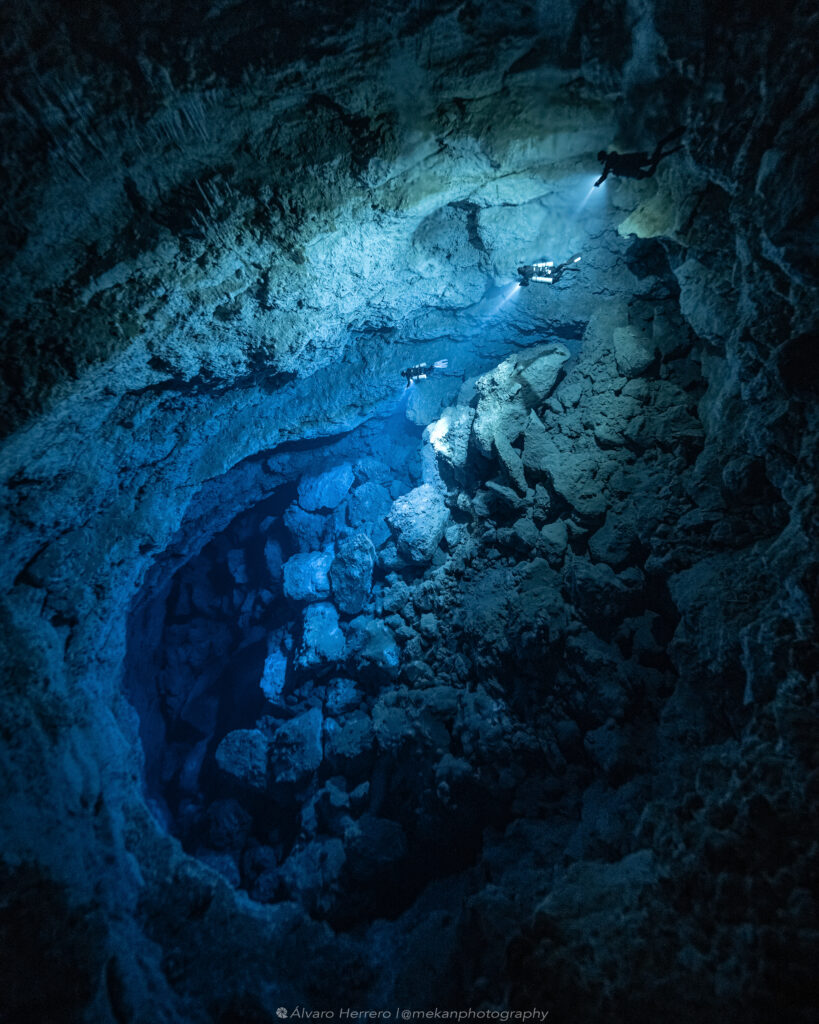
While we didn’t find the huge amounts of going cave that we could empty reels into, we did have a pretty successful resurvey project! In the last years I have conducted numerous survey and resurvey projects at ProTec and with other fellow explorers, this time, surveying at such depth was definitely a milestone and I am able to use this experience to train and give advice to new explorers or divers interested in learning cave exploration through my Underwater Cave Survey Workshop.
We now know that we are comfortable doing repetitive deep dives on the Sidewinder with longer deco times (we did five hours deco for a total dive time of seven hours). We were able to practice and manage as a team of two handling multiple tanks and DPVs, moving them in and out of the cave. We successfully managed team roles during the dive between surveying, scouting, exploring, and shooting video. In our fourth dive, we did a solid resurvey of the lines in the Blue Abyss, most notably the three hundred meters / one thousand feet of Starnawski’s deep line at an average depth of one hundred and four meters! And of course, we did explore a new tunnel, which while not very long, was at one hundred and four meters depth! With the Blue Abyss now looking pretty done, we will start looking at other sites for our next deep exploration… With Cenote Yaakun high on our list.
